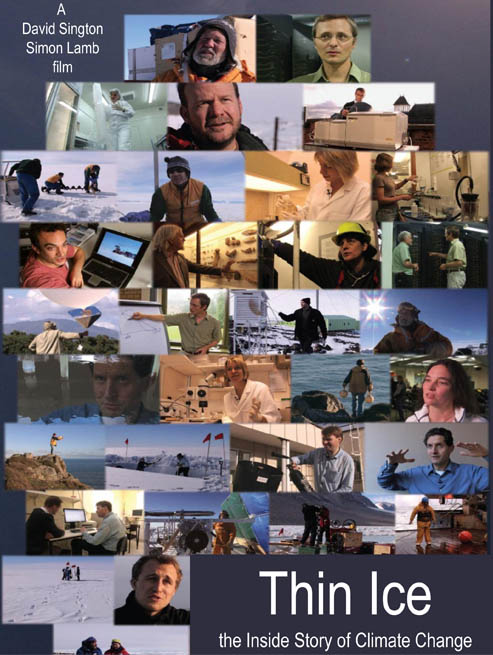Filtered By: Lifestyle
Lifestyle
Movie review: With climate change we're all skating on 'Thin Ice'
By MEANN ORTIZ
“Climate change” and “global warming” are terms we hear often these days. They are especially relevant in this year's celebration of Earth Day, and also because they're some of the biggest global issues that nations have committed to understand and address.
Last April 22nd (also Earth Day) the Philippines’ Climate Change Commission, the Embassies of the United Kingdom and New Zealand in Manila, and SM Supermalls sponsored a film screening of “Thin Ice: The Inside Story of Climate Science” as part of a global initiative.
Climategate
In recent years, climate scientists have been accused of manufacturing the phenomenon of global warming, the implications of which are staggering. So it's no surprise that there are some very vocal people who deny that it is actually happening, calling them a bunch of alarmists.
“Thin Ice” is the brainchild of geologist and amateur cameraman Simon Lamb. His concerns about the attacks against climate scientists and their work led him to make the film with the help of award-winning documentary director and producer David Sington.
Lamb came up with three questions that he wanted his film to answer: Who are these climate scientists? What are they saying? And, do they know what they are talking about?
More specifically, what kind of studies led scientists to believe that humans are affecting the earth’s climate by emitting excessive amounts of greenhouse gases like carbon dioxide? To answer his questions, he sought out the scientists themselves, hung out for months at their research stations, laboratories, and offices, and talked to them about their work.

The documentary team visited researchers on four continents and the ocean as they studied the changes in the atmosphere, oceans, and ice sheets through measurements and computer modelling.
It’s getting hot in here
The science in “Thin Ice” is framed by Lamb’s personal experiences as he travelled to various parts of the world to interview the scientists. It’s rather like watching “Lonely Planet: The Climate Change Special” in that Lamb took viewers to various destinations, interacted with the locals, and participated in activities with these people.
It’s just that the destinations are far from being pretty tourist spots, the locals are mostly academics, and their social gathering isn’t for a festival but to call dibs on soil samples.
Lamb comes across as an engaging narrator. Even though he is a scientist himself, he approached the making of the film from the audience's perspective. He rarely used science jargon in his own narration, and he echoed many of the questions that I, as a viewer, was already asking in my mind at various points in the film.
Despite all the dense science that was presented, the narrative thread of “Thin Ice” was quite easy to understand. The scientific findings were presented in a logical order, beginning with the question of whether the Earth’s surface temperature had indeed increased, and whether the level of carbon dioxide and other greenhouse gases did too.
Frozen water, frozen history
So Lamb began his quest in Antarctica, where an international community of scientists has been braving the cold for years to study the local climate by analyzing the ice, which is “not just frozen water, it’s frozen history.”
The chemistry of the snow that fell in the Antarctic reveal temperature records and atmospheric composition for the past several thousand years. Studies there indicate that when the level of carbon dioxide in the atmosphere is high, the temperature is, too.
The data from Antarctica is “highly suggestive”, but to get more conclusive proof that it is the high level of carbon dioxide that is causing the increase in surface temperatures, Lamb went to New Zealand, where one of several “clean air” monitoring sites have been measuring the composition of the atmosphere for several decades. There, historical data shows a yearly rise in the concentration of carbon dioxide in the atmosphere.
Next, Lamb consulted atmospheric physicists, who succinctly explained how the increase in greenhouse gases can result in warming. The scientific explanation for this phenomenon is apparently one of the most misunderstood one by non-scientists.
Lamb also spoke to scholars who've been collecting worldwide historical temperature data. Their research showed that while there were fluctuations in temperature over the past 150 years, the hottest temperature was recorded in the 20th century. The effects of warming are already being felt in the fastest warming place on the planet: the Arctic.
Lamb then braved sea-sickness for several days on board a research vessel whose area of study is the turbulent Southern Ocean, where scientists are looking into the role that the ocean plays in regulating the planet’s temperature.
Lastly, he visited with researchers who use computer models and ancient geological records to predict future climates.
Now you know
By the time Lamb’s journey ended, “Thin Ice” managed to present a convincing case for the reality of global warming by showing that climate scientists do know what they are saying and doing.
It was a smart move to get the scientists themselves to explain their findings in simple terms and to show them at work because it humanized them and made it easy to trust them. Viewers were able to see and hear what the scientists had to say without having to rely on a second-hand interpretation of the science and of the results of the studies.
But as that nugget of wisdom from the “G.I. Joe” cartoons taught us, “Knowing is half the battle.” The next move is up to us. – KDM, GMA News
Learn more about the science behind the film at the official website of “Thin Ice.” Photos courtesy of David Sington/Simon Lamb Films
Meann Ortiz is an engineer, freelance writer, and book blogger. The views expressed in this review are solely her own.
More Videos
Most Popular



